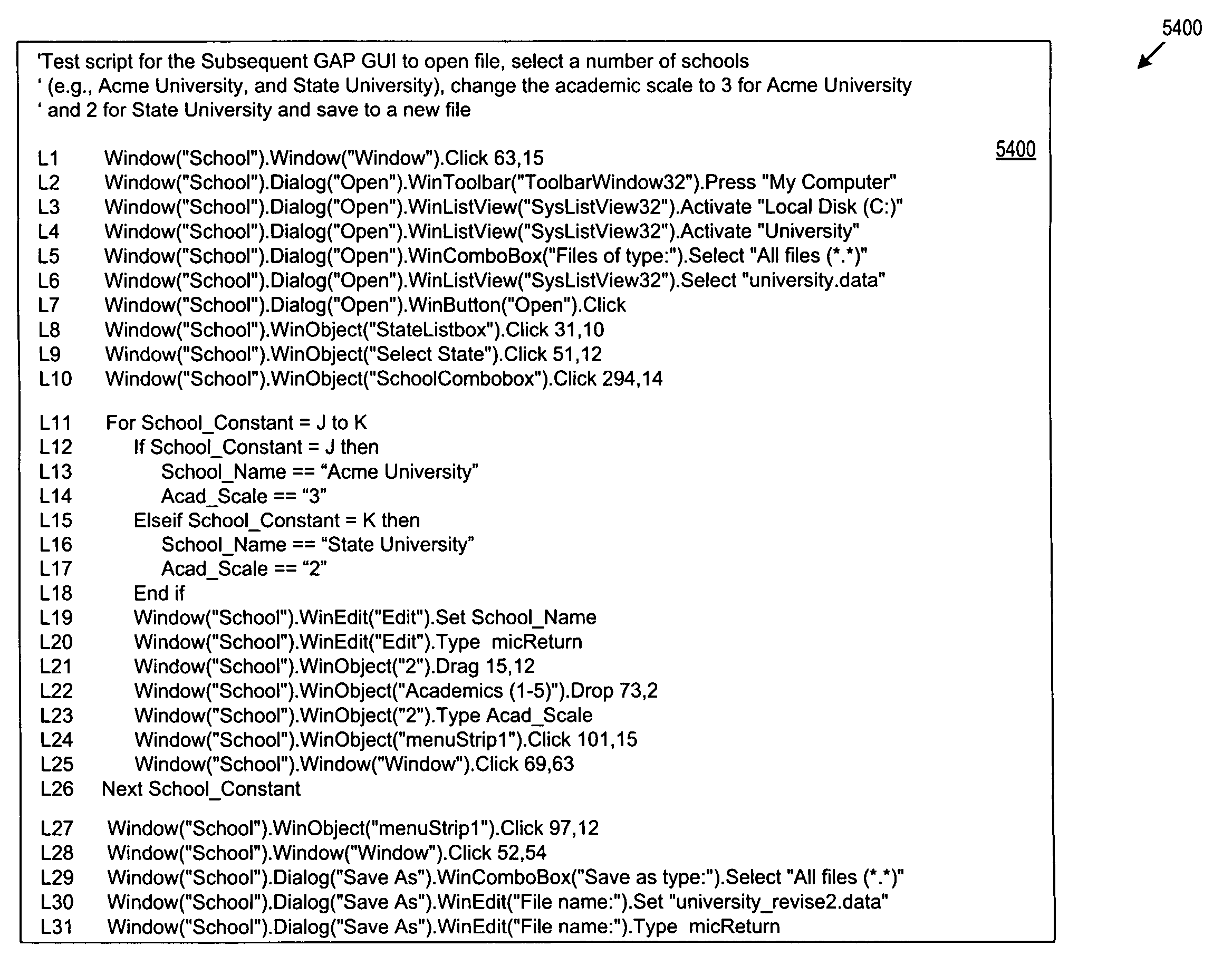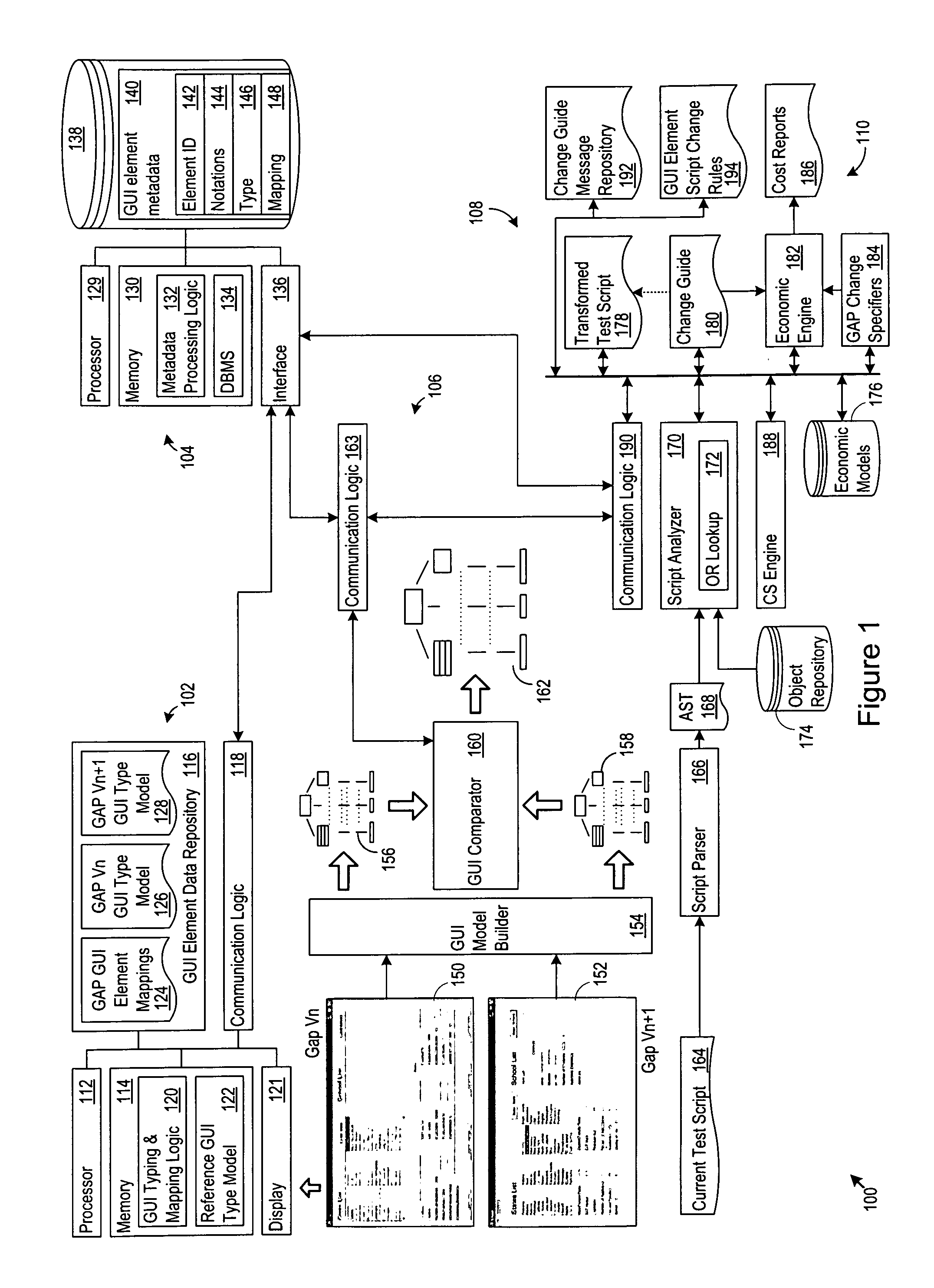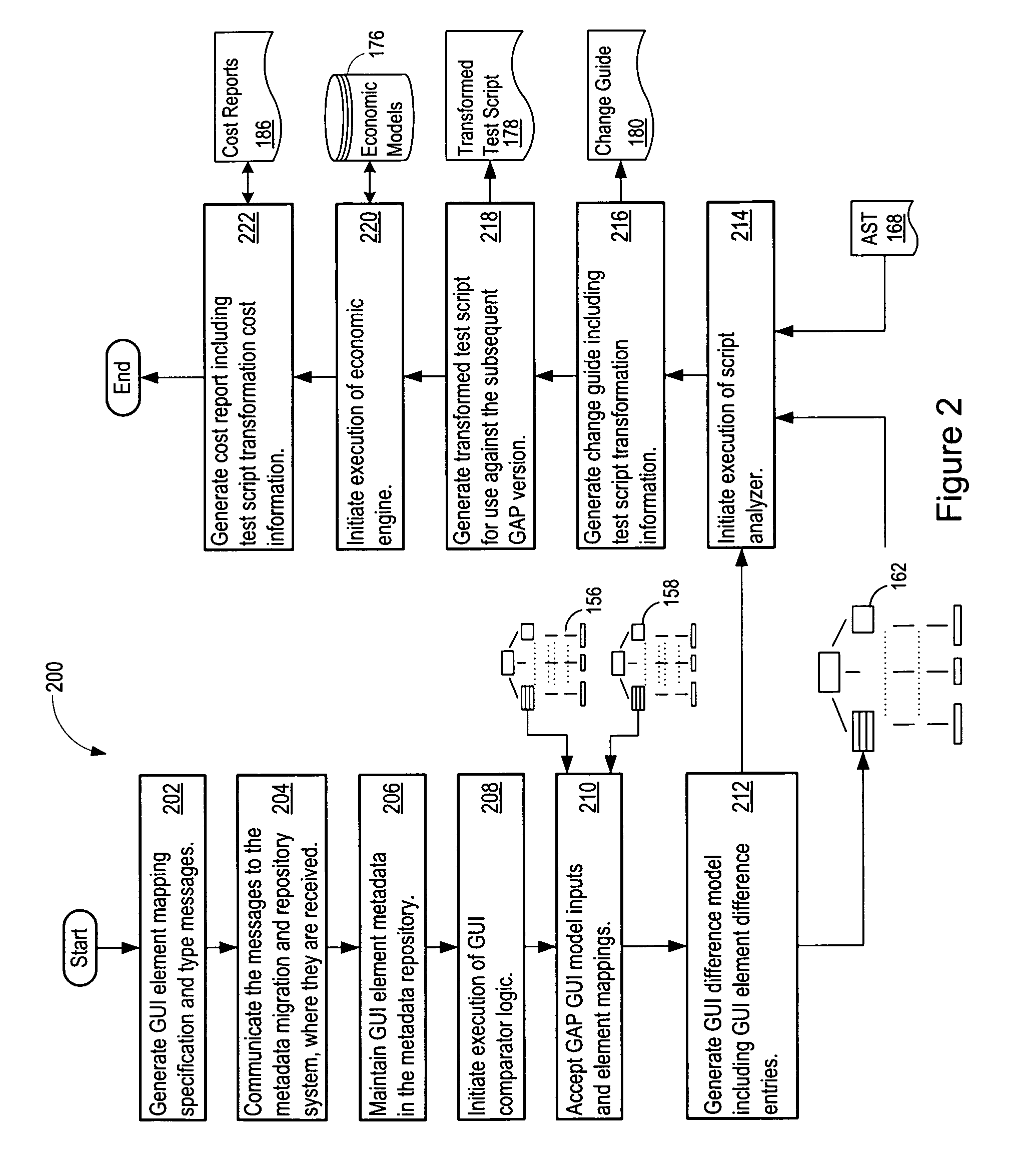Test script transformation architecture
a test script and transformation architecture technology, applied in the field of testing script generation, can solve the problems of reducing the time, cost and resource expenditure of manual and affecting the success of the original test script in the subsequent revision of the application, so as to facilitate the automatic generation of new test scripts and reduce time, cost and resource expenditure.
- Summary
- Abstract
- Description
- Claims
- Application Information
AI Technical Summary
Benefits of technology
Problems solved by technology
Method used
Image
Examples
Embodiment Construction
[0082]FIG. 1 shows a test script transformation architecture 100 (“architecture 100”). The architecture 100 includes several systems, including a GUI element typing and mapping system 102, metadata migration and repository system 104, and a GUI application (GAP) comparator system 106. The architecture 100 also includes a test script analysis system 108, and a test script economic analysis system 110.
[0083]The GUI element typing and mapping system 102 (“system 102”). The system 102 facilitates application of a formal type model to GUI elements in GAPs, as well as establishing relations between GUI elements from one version of a GAP to another. The system 102 includes a processor 112, a memory 114, and a GUI element data repository (“repository”) 116. The system 102 exchanges information with the other systems 104, 106, 108, and 110 in the architecture 100 through the communication logic 118.
[0084]The memory 114 holds GUI typing and mapping logic 120 and a reference GUI type model 122...
PUM
 Login to View More
Login to View More Abstract
Description
Claims
Application Information
 Login to View More
Login to View More - R&D
- Intellectual Property
- Life Sciences
- Materials
- Tech Scout
- Unparalleled Data Quality
- Higher Quality Content
- 60% Fewer Hallucinations
Browse by: Latest US Patents, China's latest patents, Technical Efficacy Thesaurus, Application Domain, Technology Topic, Popular Technical Reports.
© 2025 PatSnap. All rights reserved.Legal|Privacy policy|Modern Slavery Act Transparency Statement|Sitemap|About US| Contact US: help@patsnap.com



